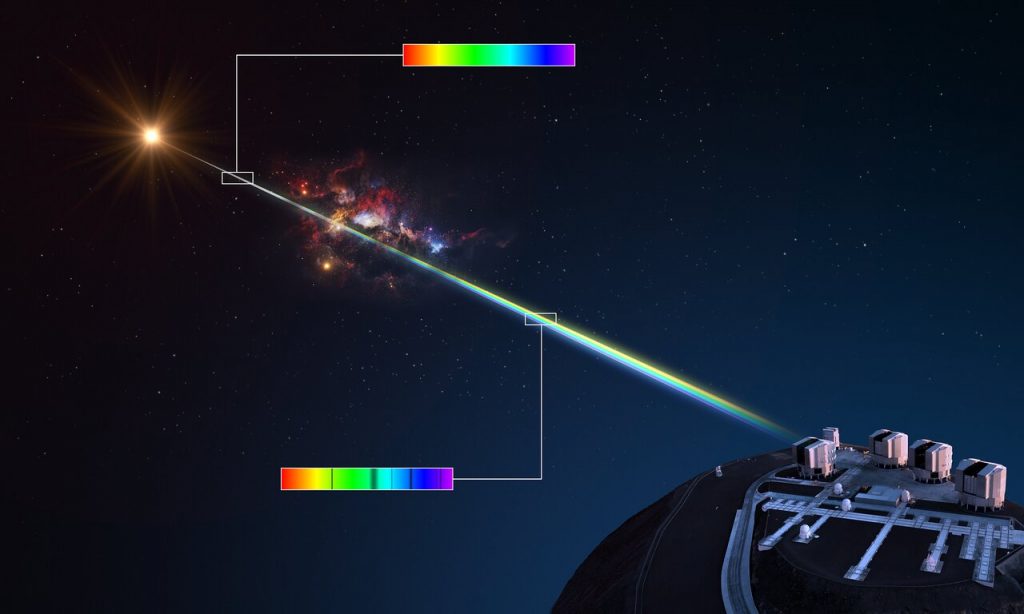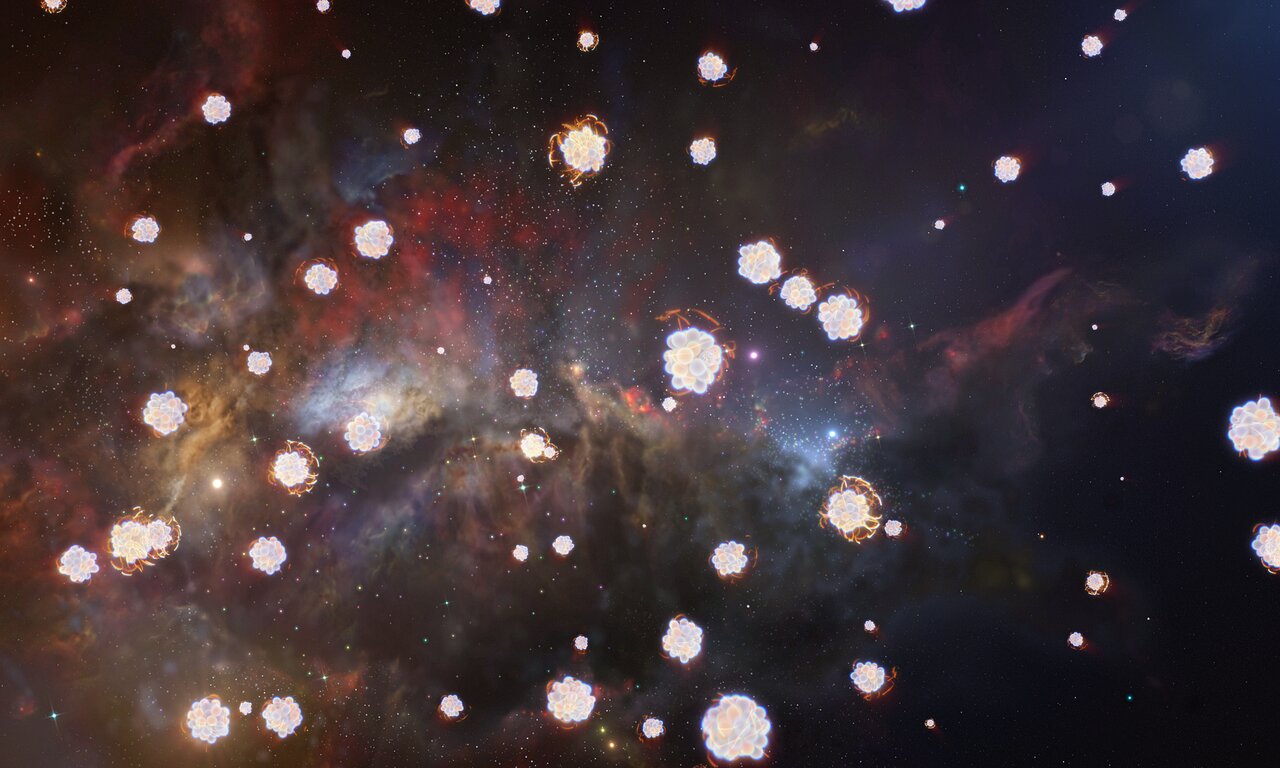For the first time, researchers have found traces of the universe’s first star explosions using the European Southern Observatory’s Very Large Telescope (VLT). Three distant gas clouds have been discovered with a chemical composition that exactly matches what we would expect after the first stars exploded. These results bring us one step closer to identifying the first stars that formed after the Big Bang.
“For the first time, we have been able to identify the chemical signatures of the first stars exploding in very distant gas clouds.” – says Andrea Saccardi (Paris Observatory), who led the research at the University of Florence.
Researchers believe that the first stars in the universe were very different from their descendants as we know them today. When they appeared 13.5 billion years ago, they contained only hydrogen and helium, the simplest chemical elements in nature. (A few minutes after the Big Bang, there were only the three lightest elements, hydrogen, helium, and small traces of lithium, in the universe. The heavier elements formed later, in stars.) The mass of the first stars was hundreds of times greater than the mass of the Sun, which they could squeeze. Accompanied by huge explosions, it turned into a supernova, during which the surrounding gas was enriched with heavier elements for the first time. Subsequent generations of stars formed from this more diverse composition of gas, and in turn released additional heavy elements when they died as well.
The first stars are long dead, so how can researchers study them? “Protostars can be studied indirectly by examining the elements released into their environment after they die.” – says Stefania Salvadori (University of Florence), published in the Astrophysical Journal Stady Co-author.
Based on data from the European Southern Observatory’s VLT telescope in Chile, researchers have discovered three very distant gas clouds from a period when the universe was only 10-15% of its current age. In these gas clouds, they identified exactly the elements we would expect after the first stars exploded. Depending on the mass of protostars and the force of their explosion, the first supernovae released elements such as carbon, oxygen, and magnesium contained in the outer layers of stars. However, some of these explosions were not powerful enough to produce heavier elements such as iron, which is only found in star cores. Astronomers searched for traces of the first stars that exploded in low-energy supernovae, looking for distant gas clouds that were low in iron but high in other heavy elements. They found it: three distant clouds from the beginning of the universe that contain very little iron but a lot of carbon and other elements, the signatures of the first exploding stars.
This special chemical composition has already been observed in many ancient stars in our galaxy, which, according to the researchers, formed as second-generation stars directly from the “ash” of the first stars. During current research, this ash was found at the beginning of the universe, so this is another piece of the puzzle. “Our discovery opens new horizons for the indirect study of the first stars and is a great complement to the study of stars in our galaxy.” Salvadori explains.
To detect and study distant gas clouds, researchers have turned to quasars, powerful sources of light powered by supermassive black holes at the centers of distant galaxies. When quasar light crosses the universe, it passes through clouds of gas along the way, leaving traces of their different chemical compositions.
The researchers installed it on the European Southern Observatory’s Very Large Telescope X shooter They used an instrument to examine the light of several quasars, looking for these specific chemical signatures. The X-shooter separates incoming light into a very large number of wavelengths, i.e. colours He breaks itIt is thus uniquely able to identify many items in distant clouds.

This research points to new opportunities for the next generation of telescopes and instruments, like those under construction at ESO Elt The ArmazoNes high-resolution high-dispersion Echelle telescope and spectrometer (Andes Mountains) Its name is spectrometer. “Using the ELT-based Andes, we will be able to observe these rare gas clouds in fine detail and finally reveal the secrets of the first stars.” – Summary by Valentina Dodorico (INAF), co-author of the study.
source: rain
comment












































